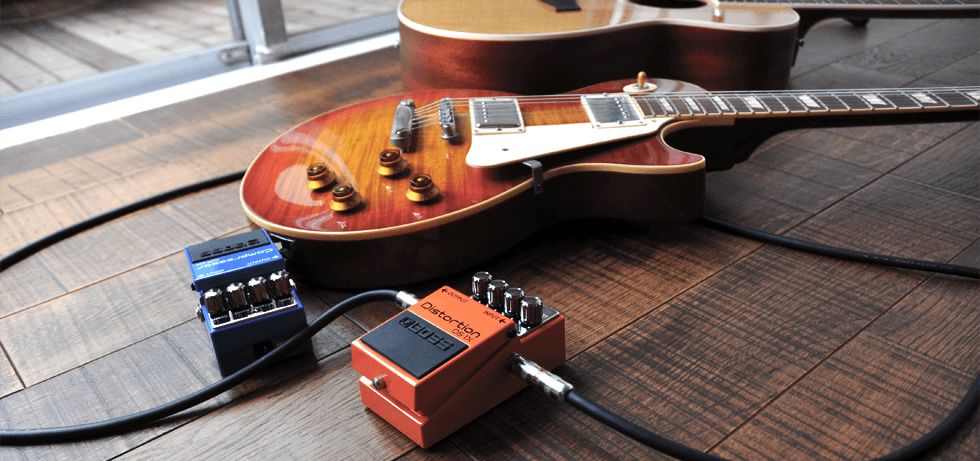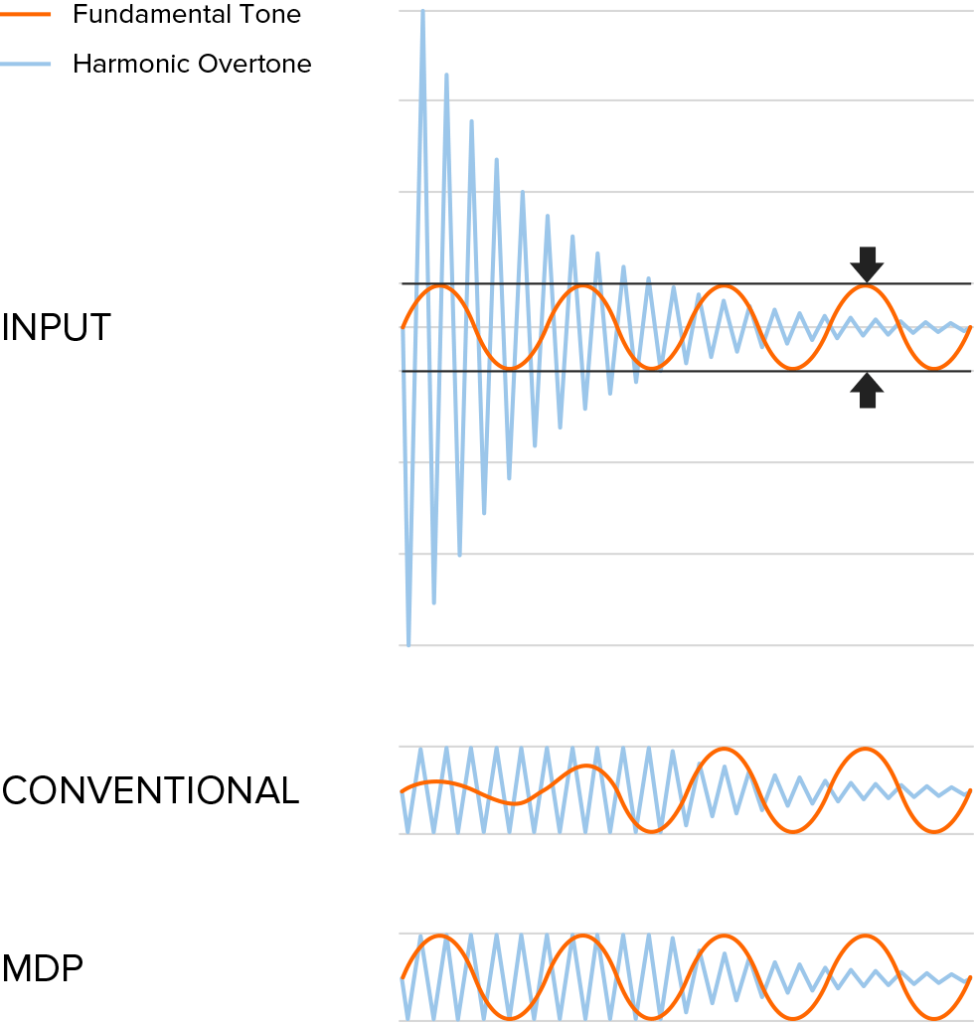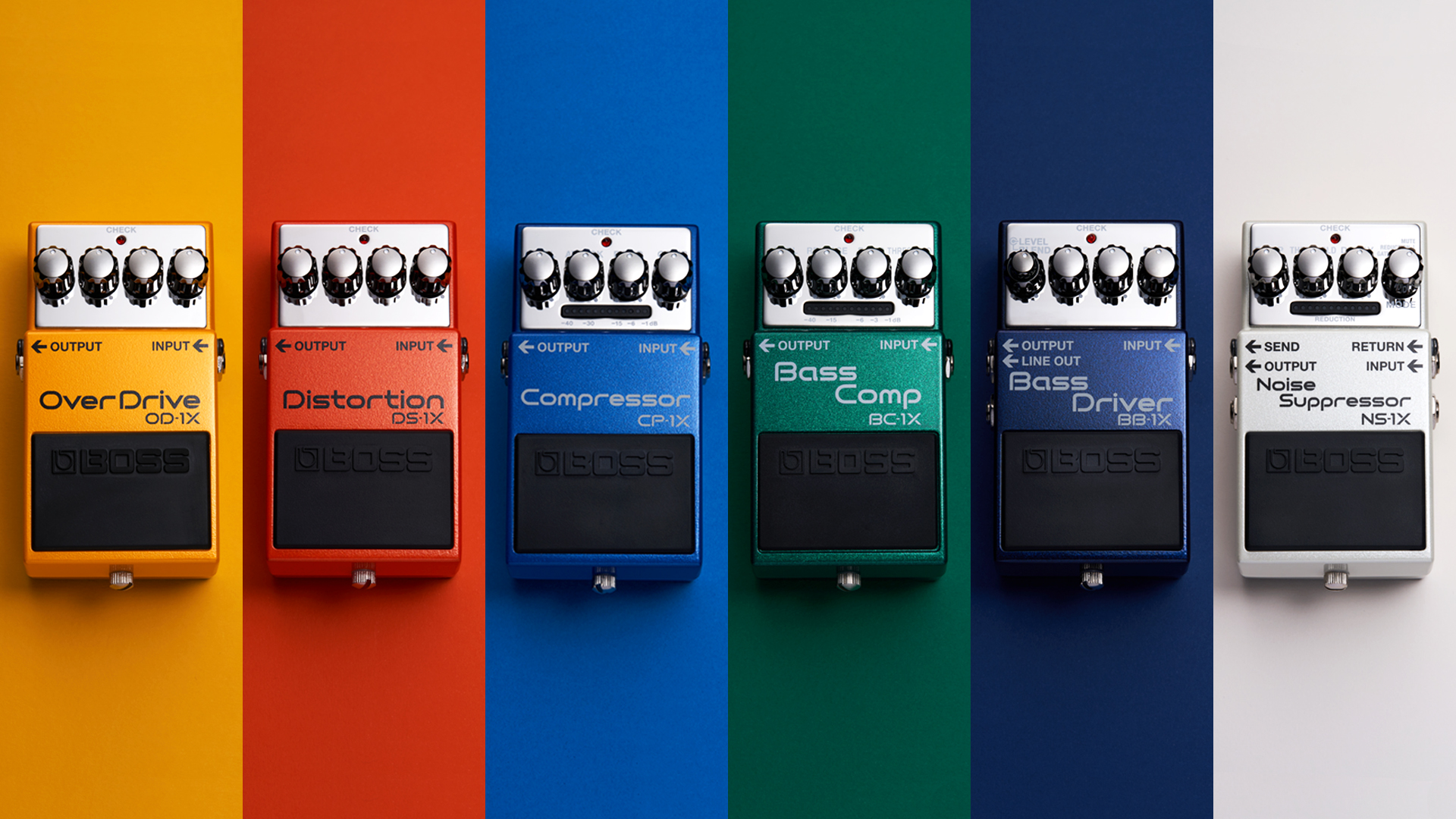Since its founding, BOSS has meticulously researched the sound-making processes of the guitar. Times change, and technologies evolve. Still, the primary goal remains to create products that inspire creativity and produce the best guitar tones possible. The definition of great tone is personal and can vary considerably from player to player. BOSS X Series pedals are popular with musicians who value character, crispness, and expressiveness. Discover the technology behind the BOSS X Series pedal.
Multi-Dimensional Processing
The BOSS X Series is a sophisticated range of compact guitar pedals. They harness powerful Multi-Dimensional Processing (MDP) technology to preserve tone and retain character.
MDP is the pinnacle of 50 years of engineering. This technology allows musical expressiveness that’s difficult to achieve with conventional effects technologies. Let’s explore the complex sound-production capabilities of the guitar and how MDP technology brings unmatched expression to your music.
"Many determining factors can influence the guitar's sound, from construction type to wood. Even strings, intonation, and choice of guitar pick can make a difference."
ELEMENTS OF GUITAR SOUND
Many determining factors can influence the guitar’s sound, from construction type to wood. Even strings, intonation, and choice of guitar pick can make a difference. Components such as pickups, pots, and cables will also contribute to the overall sound. Combining this with amplification and effects processing, we quickly see how many variables exist.
To understand the MDP technology behind BOSS X Series pedals, let’s first analyze the three main elements of sound and how they apply to the electric guitar.

Pitch
The guitar’s pitch changes according to the strings played and the fretboard position. If the guitar has a vibrato bridge (also known as a tremolo bridge), the bridge’s arm can change the pitch.
Loudness (Level)
The loudness of the guitar is affected by picking dynamics and the volume control on the instrument. Other factors influence the loudness, including the output of guitar pickups, pickup height, string gauge, and more.
Timbre (Overtone Structure)
Many elements affect a guitar’s timbre, including its type, brand, material, finish, pickup type and position, and tone controls. These elements get intensified when using effects like distortion. Picking strength also affects timbre, especially with a distorted tone.
As with all sounds, the element of time also comes into play. After a guitar string gets picked, the pitch, loudness, and timbre all change constantly as the string vibration decays. This complexity gets magnified exponentially when multiple strings vibrate at once.

Other Elements
Additional factors subtly influence the guitar’s three sound elements: pick, pick material, playing the same notes on different strings, and others. As you play, all these elements interact to produce the guitar’s evolving dynamic response, as shown in Figure 2.
Another critical factor is that low and high notes’ overtone structures differ entirely. And as the sound decays, the volume and timbre of all notes also change. With a distorted sound created by a stompbox, picking harder and adjusting the guitar’s volume knob has more impact on the timbre than the loudness.

"With a distorted sound created by a stompbox, picking harder and adjusting the guitar's volume knob has more impact on the timbre than the loudness."
This variation in overtone structure is articulation. It plays a significant role in musical expressiveness. Simply put, the sense of sound energy is more critical than the volume level for musical expression.
Imagine the sound of a crash cymbal in a drum set. When the cymbal gets struck hard, the sound is always perceived as hard—even if the volume gets turned down. Conversely, a soft-struck cymbal is not perceived as a hard sound, even when the volume gets turned up.
Multi-Dimensional Processing (MDP) Technology
Now, we understand the basics of guitar sound and elements of expressiveness. Let’s explore what MDP technology does to preserve it.
Optimized Processing for Each Element
In the world of guitar, great tone results from many complex elements that interact with each other in a pleasing way to the player. Conventional processing is a one-size-fits-all approach applied to all aspects simultaneously. In many applications, this can provide the best effect. But, when the numerous elements vary considerably, the conventional approach can be quite limiting.
For example, you might dial in a distortion to produce a tight, even tone perfect for heavy, palm-muted riffs on the low strings. But the tone can be thin and sterile when you play that same sound on single-note lead phrases in the mid and high ranges. In this case, optimizing your effect for one style reduces the sound quality for another. When you adjust the effect to work better for both styles, the result is a compromise.
"An MDP distortion analyzes level, overtone structure, and frequency characteristics."
MDP Analysis
Here is where the powerful MDP approach excels. An MDP distortion analyzes level, overtone structure, and frequency characteristics. These vary according to picking dynamics, register, string gauge, chord or single note, wound or plain string, and other factors. MDP distortion continually adjusts itself to apply the best effect at all times. As a result, your distortion is always completely optimized, no matter what style or range you play in.
Figure 3 illustrates how the MDP distortion works. Conventional distortion focuses on the “sweet-spot” frequency range. As a result, many overtones in the original signal get lost. MDP detects all the information the guitar produces and reflects it, preserving the wide-ranging expressiveness of the tone and improving clarity.

Superior Results
But MDP is not only for distortion. It provides superior results for all types of processing and works well for compression. In Figure 4, you can see the dramatic compression improvement with MDP. When a string gets picked, it shows the input signal’s fundamental tone and harmonic overtones. The structure is more complex and produces more level at attack.
As a result, conventional processing compresses the fundamental tone and overtones equally. With MDP, only the overtones get compressed, preserving the fundamentals. This approach provides optimized compression that never squashes your core tone. The result is a natural sound that’s never colored or constrained.
"MDP is not only for distortion. It provides superior results for all types of processing and works well for compression."

The Quest for Greater Musical Expression
Articulation, defined by a varying overtone structure, is critical to the expressiveness of a guitar sound. Figure 5 compares conventional and MDP distortion overtone structures in response to picking dynamics.
A conventional distortion loses some overtones when the picking is soft. As picking strength increases, the distortion introduces high-end overtones that produce muddy resonances. Conversely, MDP distortion retains all the rich overtones of the original sound, even when playing softly. And when picking the strings hard, the thick low-end and clear high overtones get retained. Since an MDP effect maintains natural overtones, nuances of players, styles, and instruments shine through.

As we’ve detailed, MDP uses advanced technology to analyze and divide the input signal into many elements. Then, it simultaneously applies massive, complicated processing to each. Going beyond a simple snapshot, MDP adjusts its response temporally, continually refining the processing to address complex tonal changes over time.
"Going beyond a simple snapshot, MDP adjusts its response temporally, continually refining the processing to address complex tonal changes over time."
Natural Response
In developing each product, the MDP processing gets tuned with the direct input of top guitarists worldwide. This process helps achieve a natural response with MDP, easily accessible to the user via intuitive stompbox controls. But despite the simple interface, the internal processing is quite detailed. Many interactive parameters get adjusted to achieve the final results.
Figures 6 and 7 compare the internal parameters of a conventional distortion pedal versus an MDP distortion pedal. Figure 6 shows the straightforward processing range of the Drive knob on a standard distortion stompbox. In stark contrast, Figure 7 shows the sophisticated processing inside the MDP pedal as the knob gets turned from minimum to maximum. As you can see, tweaking a single knob moves many parameters to varying degrees. Furthermore, these parameters continuously interact in reaction to what the input signal is doing at any given time.
"With its intelligent processing, MDP delivers impossible results with conventional technologies."
Musical, Natural, and Inspiring
With its intelligent processing, MDP delivers impossible results with conventional technologies. But this would mean nothing if those results weren’t musical, natural, and inspiring to play. Indeed, the intelligence in MDP processing is not simply the result of powerful DSP and advanced algorithms. The process is guided by experience, knowledge, and unwavering dedication. With a fusion of technology, craftsmanship, and know-how, MDP enables you to express your guitar voice like never before.







